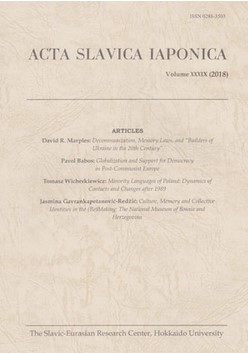Russian Orthodox Pilgrims in Jerusalem in the Second Half of the Nineteenth Century: Between the Old City and “New Jerusalem”
Russian Orthodox Pilgrims in Jerusalem in the Second Half of the Nineteenth Century: Between the Old City and “New Jerusalem”
Author(s): Elena AstafievaSubject(s): History of Church(es), Military history, Social history, 19th Century, Eastern Orthodoxy, Sociology of Religion
Published by: Slavic Research Center
Keywords: Russian Orthodox Pilgrims in Jerusalem; 19th century; Grand Duke Constantine; Mansurov’s proposals; First guidebooks to Jerusalem;
Summary/Abstract: Following the signing of the Treaty of Paris in 1856 and in the context of the neutralization of the Black Sea, Grand Duke Constantine, minister of the Russian Navy, suggested the creation of the Russian Steam Navigation and Trading Company to his brother Tsar Alexander II in an attempt to save part of the Black Sea fleet. To financially reinforce the new Company, Constantine suggested encouraging Russian Orthodox pilgrimages to the holy places of the “Orthodox East,” located in Jerusalem, Constantinople, and Mount Athos. He asked his assistant, Boris Pavlovich Mansurov, to write a guidebook for Russian pilgrims going to Palestine based on the model of Western European guidebooks. After his stay in Palestine and Syria during the winter of 1857, Mansurov did not write a guidebook, but rather a report to the Grand Duke, and later a book describing the lives of Orthodox-Greek, Armenian and Russian-pilgrims in Jerusalem and its surroundings. In these documents, he drew a plan of action meeting the needs of Russian pilgrims to the Holy Land. These texts marked the start of important Russian actions in Palestine after the Crimean War: largescale land purchasing followed by the building of a structure for the Russian Consulate, hospices for pilgrims, and the Orthodox Holy Trinity Church near the Old City. In Russian sources, these buildings are defined as “Russian constructions,” “Russian properties,” or “New Jerusalem”; the local population named this compound “Moscobia.” These constructions were considered by the representatives of the Great Powers and the Christian communities as “grandiose,” “magnificent,” or as “Russia in miniature.”
Journal: Acta Slavica Iaponica
- Issue Year: 2020
- Issue No: 40
- Page Range: 149-168
- Page Count: 20
- Language: English

